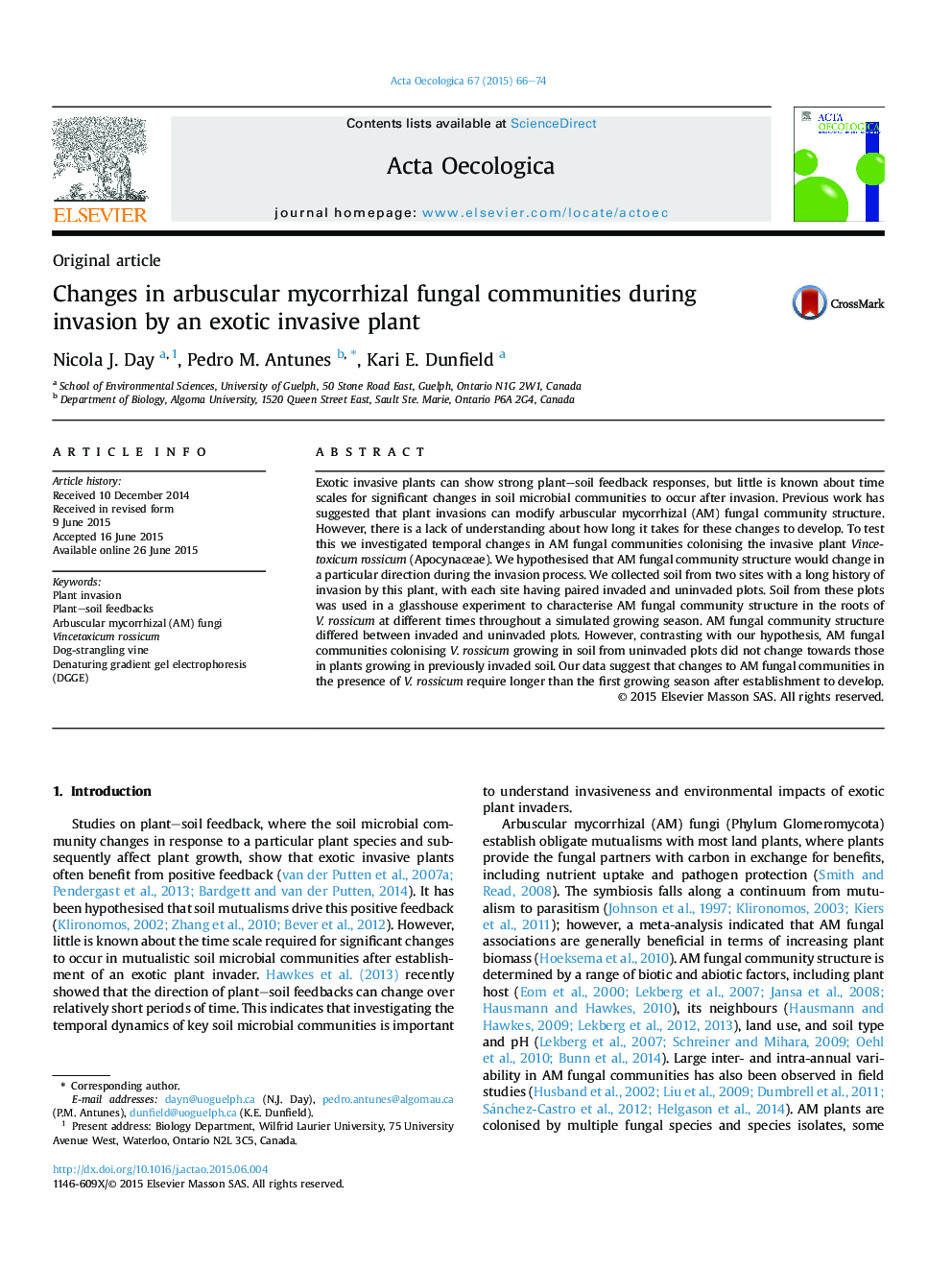| Article ID | Journal | Published Year | Pages | File Type |
|---|---|---|---|---|
| 4380821 | Acta Oecologica | 2015 | 9 Pages |
•Vincetoxicum rossicum alters arbuscular mycorrhizal (AM) fungal communities.•AM fungi rapidly colonized V. rossicum seedlings.•AM community structure from un- and invaded soils did not converge in roots.
Exotic invasive plants can show strong plant–soil feedback responses, but little is known about time scales for significant changes in soil microbial communities to occur after invasion. Previous work has suggested that plant invasions can modify arbuscular mycorrhizal (AM) fungal community structure. However, there is a lack of understanding about how long it takes for these changes to develop. To test this we investigated temporal changes in AM fungal communities colonising the invasive plant Vincetoxicum rossicum (Apocynaceae). We hypothesised that AM fungal community structure would change in a particular direction during the invasion process. We collected soil from two sites with a long history of invasion by this plant, with each site having paired invaded and uninvaded plots. Soil from these plots was used in a glasshouse experiment to characterise AM fungal community structure in the roots of V. rossicum at different times throughout a simulated growing season. AM fungal community structure differed between invaded and uninvaded plots. However, contrasting with our hypothesis, AM fungal communities colonising V. rossicum growing in soil from uninvaded plots did not change towards those in plants growing in previously invaded soil. Our data suggest that changes to AM fungal communities in the presence of V. rossicum require longer than the first growing season after establishment to develop.
